This grid moves energy, but not always reliably
Engineers are working to make the distribution of electricity more reliable and resilient
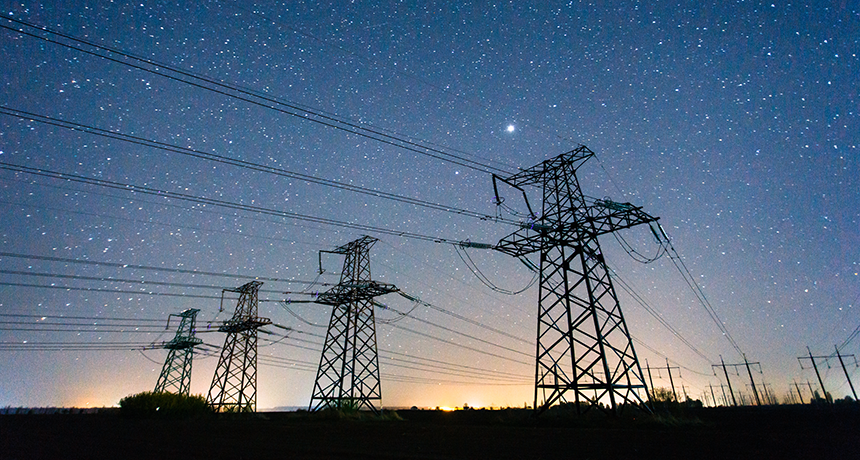
A failure of the electric system can quickly leave millions of people in the dark.
Vadven/iStockphoto
Share this:
- Share via email (Opens in new window) Email
- Click to share on Facebook (Opens in new window) Facebook
- Click to share on X (Opens in new window) X
- Click to share on Pinterest (Opens in new window) Pinterest
- Click to share on Reddit (Opens in new window) Reddit
- Share to Google Classroom (Opens in new window) Google Classroom
- Click to print (Opens in new window) Print
More than three million people in Puerto Rico lost electricity in September 2017. Back-to-back hurricanes had just slammed into the island. Floods from Maria, the more powerful of them, knocked out many power plants. Winds and mudslides toppled towers and the power lines they carried. Explains climate scientist Juan Declet-Barreto: “Losing power is not merely inconvenient. In a climate-ravaged, tropical area like Puerto Rico, it’s life-threatening.”
With no electricity, hospitals had to delay surgeries. They couldn’t run many scans or tests, either. Without timely care, some patients died. Puerto Rico’s water-treatment plants lost power during Maria. As a result, people across the island lost access to clean water. And few people could cook or refrigerate food. Anyone lucky to have a portable stove or generator had to stand in long lines for fuel. Meanwhile, schools and businesses closed or cut their hours.
Declet-Barreto works for the Union of Concerned Scientists in Washington, D.C. But he grew up in Puerto Rico. His parents and sister’s family still live there. Phones went out shortly after Hurricane Maria made landfall. For days, Declet-Barreto didn’t know his family’s fate. Fortunately, they fared pretty well. And their electricity came back within a few weeks.
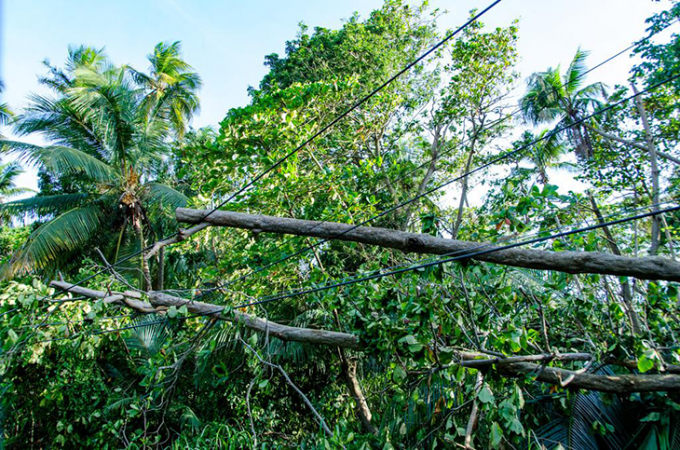
Many others were not as lucky. Four months after Maria, about one-third of the island still lacked electricity. Even after six months, roughly one in 10 people still couldn’t switch on the lights. It was nearly a year after Maria hit before everyone again had power.
Hurricanes are severe events, but Maria was especially bad. Its winds and flooding “couldn’t have been a more literal ‘perfect storm’ of conditions,” Declet-Barreto says. Its winds and fallen trees destroyed much of the island’s system for carrying electricity from power plants. Even before Maria, the company that delivers electricity had not been replacing aging equipment.
Puerto Rico is far from the only place that has struggled to keep its lights on, phones charged and computers powered up.
The electric grid is a term for the system that brings electricity from where it’s made to homes and businesses. Nearly everyone depends on that system. Yet as important as it is, this grid faces a host of threats. Some are simple and old. Others are complex and very new.
Fortunately, engineers are working on them. Their research aims to keep the grid going, despite natural — and some decidedly unnatural — disasters. Other projects are looking at how to get the lights back on more quickly after power outages. Still more work looks for ways to rely less on fossil fuels (mainly coal, oil and natural gas) and instead generate more electricity using cleaner wind and solar energy. The cleaner sources might not only help slow global warming, but also make the grid more resilient to shutdowns.
Bad weather, naughty squirrels and more
The grid has many thousands of pieces and parts. Power lines can stretch across continents. The grid’s electricity flows along many paths. Both its supply of energy and the public’s need for it can vary with the weather, time of day or day of the week.
Power engineers find it a challenge to keep such a complex system running smoothly. “We need to keep things perfectly balanced,” says electrical engineer Chris Pilong. In other words, the electricity coming onto the grid at any time must match the amount being used. Pilong works at PJM Interconnection in Audubon, Penn. That company runs the grid for all or parts of 13 states plus Washington, D.C.
It doesn’t take much to throw the system out of whack. Too many people using too many air conditioners, computers, ovens and other appliances at the same time can disrupt the grid. Winds, falling trees and a build-up of ice can all bring down power lines. In fact, bad weather and other routine problems cause most U.S. power outages, a May 2018 report finds. It was authored by Grid Strategies. That’s an energy-analysis group based in Washington, D.C.
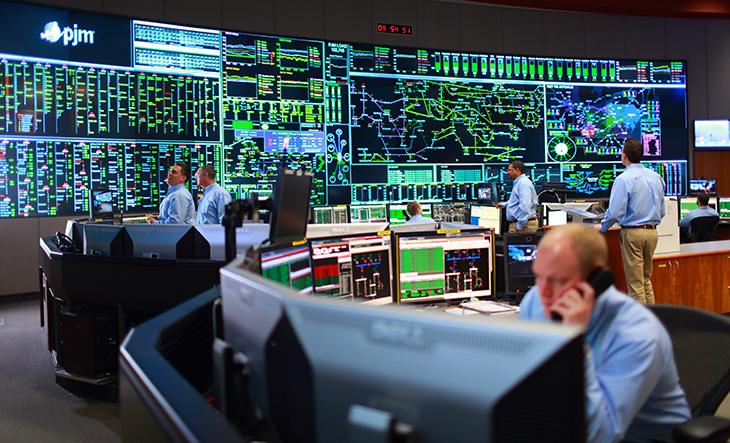
PJM and other grid operators know problems can and will arise. That’s why they often have power plants on standby. Those plants can power up if another plant goes down. However, catastrophic storms can overwhelm most backup plans, says Declet-Barreto. And climate change could worsen such events and make them more frequent.
The sun can set off a different type of “weather” problem. Though rare, it can be severe. One 1989 power blackout in Quebec and the northeastern United States, for instance, was triggered by a coronal mass ejection. That’s a powerful burst of gas and magnetic energy from the sun. This stellar storm hurled electrically charged matter into space that messed with Earth’s magnetic field. This sent rogue electrical currents through parts of the grid.
Georgios Karagiannis is an environmental engineer who manages disaster risks. He works at the European Commission’s Joint Research Centre in Ispra, Italy. Rogue currents from space aren’t an energy bonus for Earth-bound electricity users, he notes.
Far from it.
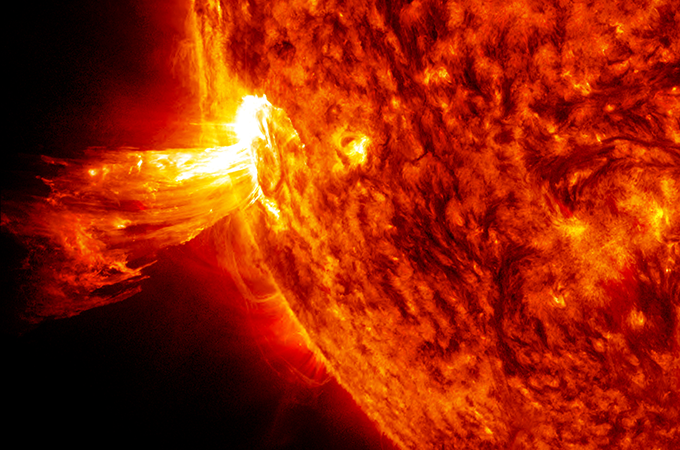
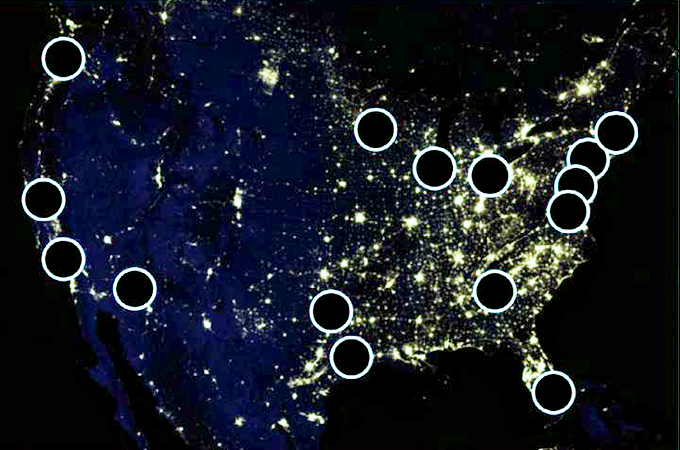
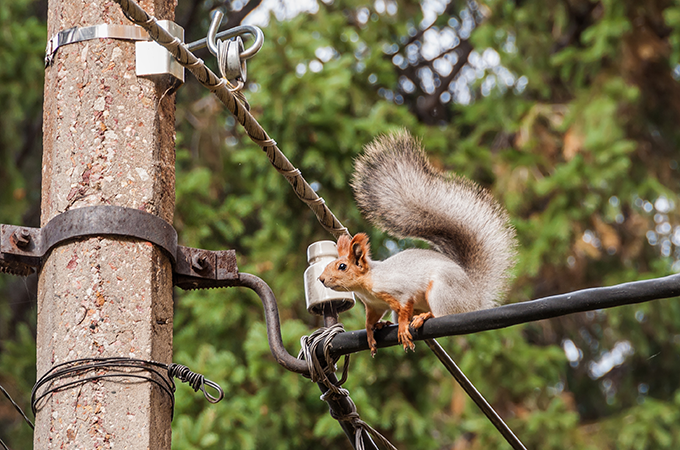
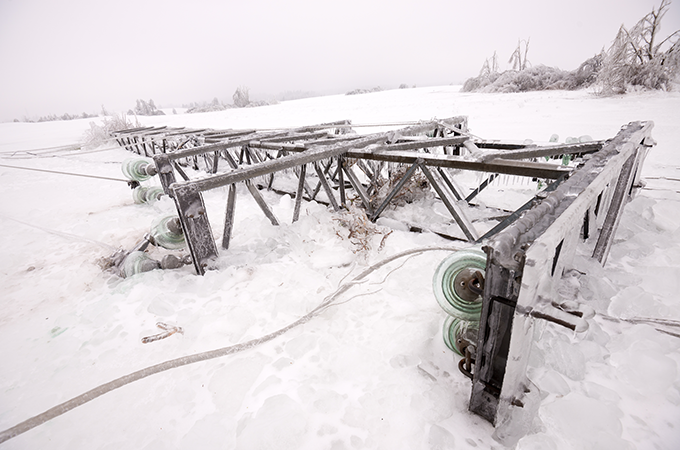
Those strong solar-flung electrical surges flow in one direction only, he explains. Yet the grid tends to transport current that changes direction many times per second. If space weather’s one-way surge of direct current enters that two-way alternating current grid, it can cause power outages. It also might harm costly equipment.
Then there are threats posed by terrorism. Bombs could destroy large power plants or transmission centers. Scarier still would be an electromagnetic pulse (EMP). It’s a huge burst of energy released by a nuclear blast high above Earth’s surface. If triggered in the right place, an EMP could knock out electricity across the United States and parts of Canada — perhaps for weeks or more. A 2017 report by the Electric Power Research Institute, based in Palo Alto, Calif., warned of EMP risks to the U.S. power grid.
Then there’s cybercrime. Sensors, meters and other grid equipment “talk” with each other through computers. On July 23, 2018, the U.S. Department of Homeland Security warned grid managers that Russian hackers had gotten into the computer systems that run many American energy companies. They reported that such hackers could act as terrorists and remotely disrupt or turn off part of the nation’s supply of electricity.
Yet another bad actor has been tormenting grid operators: the backyard squirrel! This fluffy-tailed beast chews through wires. In 2016, squirrels caused almost 3,500 outages in the United States. Nearly 194,000 customers lost power from squirrel damage that year, notes the American Public Power Association.
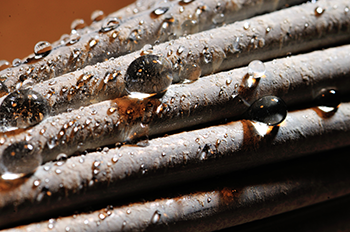
Andrew Phillips is an electrical engineer. He works for the Electric Power Research Institute, or EPRI, in Charlotte, N.C. His group’s mission: Toughen the electric grid “to put up with events that come and hit us.”
For one project, Phillips’ team is developing a special porcelain coating for electric wires. Teeny structures in the ceramic material won’t let moisture stick. Water or ice “rolls off in a ball,” Phillips notes. In freezing weather, this should prevent an ice build-up that could bring power lines down.
EPRI also is working on coatings to keep salt and other chemicals from harming insulators. These are materials that jacket power lines or equipment. They prevent a range of problems. (These include short circuits — accidental diversions of an electric current). If field tests go well, electric companies could start using some of these new coatings within a year or two.
Phillips and his team also work on robots, advanced sensors and remote-controlled drones. Such tools can pinpoint problems such as downed wires or too much heat along wires and in other grid equipment. Teams might then rush in for repairs before a fire breaks out, equipment shuts down or other problems take place.
Looking at the big picture
Protecting elements of the grid is good. But sometimes that may not be good enough. The grid contains thousands of parts. So a piecemeal fix for failing parts may not always be the best way to go, says Karagiannis at the European Commission’s Joint Research Centre.
For example, floods can trigger explosions at electrical substations. (These centers control the voltage of the electric current. They make it possible for cities and neighborhoods to use the electricity that power plants generate.) One way to prevent flood damage is to build substations on higher ground. Another is to put walls around them to keep flood waters at bay.
But those actions deal with just one bit of the grid and only one threat, Karagiannis notes. His preference: Make sure each local area in the grid can get power from at least two sources. Then if a flood hits one substation, some other source could still supply power. So-called “smart grid” technologies could use sensors and computers to do the re-routing. He and his colleagues described this in a December 2017 report from the Joint Research Centre. Electric companies still would need to deal with flooding or other disasters, but many fewer people might lose electricity.
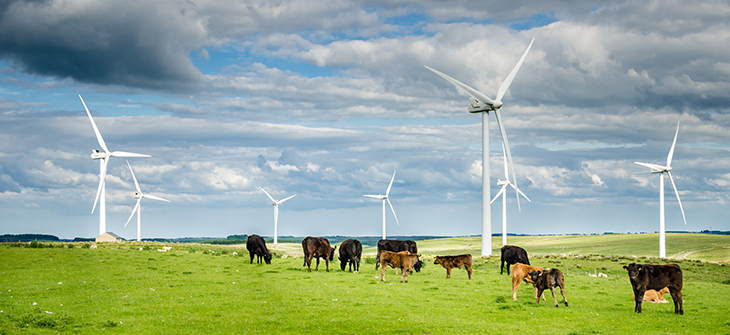
Using more clean-energy sources, such as wind and solar power, also should help strengthen the grid, Karagiannis and Declet-Barreto argue. Those and other renewable resources generated almost one-sixth of U.S. electricity in 2017, notes the Energy Information Administration in Washington, D.C.
Most electricity is generated by burning fossil fuels. That burning has been polluting the air and contributing to global warming. Cleaner forms of energy could curb those emissions. And here’s another potential payback from such a change: Slowing global warming should cut the growing number of extreme storms and heat waves that themselves stress the grid.
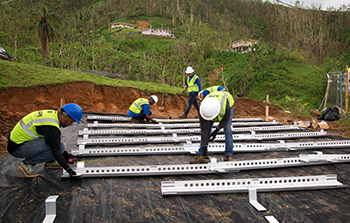
Wind turbines and solar power also can be spread throughout a region. This is known as distributed generation. If a large power plant goes down or a storm crops up at one spot, unaffected generators could still provide power.
Puerto Rico’s grid relies heavily on a few large power plants. A problem at any one of these — or at some link between them — could cause a widespread power outage. And that’s what happened when hurricane Maria struck. A similar problem happened early in 2018. That’s when a bulldozer brought down a line between two power plants on Puerto Rico’s south coast. An island-wide power blackout followed.
In a June 2018 report on Puerto Rico’s electric grid, the U.S. Department of Energy advised the island to produce more of its electricity from renewable sources and distributed generation.
Microgrids and batteries
As strange as it might sound, one way to make the electric grid stronger is to break it up into tiny pieces. But not all the time — just when there’s a problem. A microgrid can add protection. These are systems that can make and distribute electricity to a small area. It’s a type of distributed power generation.
Under normal conditions, a microgrid connects to the full grid. But in an emergency, it can break that link and power some small region on its own. New York University became one such microgrid when Hurricane Sandy hit New York City in 2012. While most of the borough of Manhattan lost power, the school’s lights stayed on.
NYU could do this because it burns natural gas to heat water and its buildings. Some of the heat produced normally ends up as waste. The university uses that excess heat to run a turbine. It powers a generator that makes electricity. This bonus power even runs air conditioners for cooling.
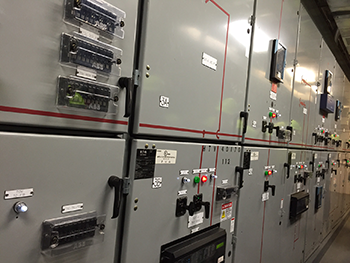
Case Western Reserve University in Cleveland, Ohio, hosts a far smaller microgrid. This “living laboratory” lets researchers try out ways to improve the grid, explains Alexis Abramson. She co-directs the school’s Great Lakes Energy Institute. Some projects at her lab are probing better ways to store energy from renewable sources. It’s an important goal.
Based on sunlight, weather and the time of day, solar energy and wind power produce varying amounts of electricity. People also tend to use more electricity at certain times most days, such as middle- to late afternoons.
Power companies pay more (and may charge more) for energy at times of greatest need — those periods of peak use. Homeowners or companies that own solar panels or a wind turbine would rather feed their energy into the grid during these peak times to earn more money. But much of their power may have been generated at non-peak times. Storing that power for sale later at peak periods takes good batteries.
“Batteries are really where we’re going to see the future evolve,” says Abramson. More battery power would let renewable energy replace more fossil-fuel power plants. Batteries can make renewable energy work like “always-on” power. Batteries also can become a back-up if the larger grid goes down. They can allow customers to temporarily break away from the grid and use the energy they’ve stored.
Toward that end, several projects at Case Western Reserve focus on what are known as flow batteries. Instead of a fixed-size battery, they store different liquids in separate tanks. When these liquid chemicals are allowed to mix, they react to produce electricity. In theory, the chemical tanks could be any size. And they should last longer than normal batteries. So flow batteries could supply a big building, a microgrid — or perhaps even a larger part of the grid.
Electric cars will be part of the grid’s future too, notes Laura Cozzi. She’s an economist and environmental engineer in Paris, France. There, she works for the International Energy Agency. Batteries power these vehicles. People often charge them up at off-peak times, when the electricity costs less. If enough people get electric vehicles, many of those batteries could work together with the grid.
For example, plug-in stations at homes or workplaces could let people’s vehicles store excess renewable energy. And those vehicles might then discharge a bit of their electricity to balance the grid at times of high demand. Then they would charge up again in time for drivers to go places. That’s the word from researchers at the Lawrence Berkeley National Laboratory in California. The team’s study appeared May 16, 2018 in Environmental Research Letters.
What can you do?
You don’t control the grid, but you do use it. You can reduce demands on the grid — and save money — by using electricity more efficiently. Here’s how:
- Urge your family to use a “smart” thermostat. Such a computer-controlled device lets you adjust energy use for different times of day (such as when you might be asleep or away from home). Some of these thermostats even let you make changes from a phone’s app when you’re away from home.
- Set the thermostat a bit warmer in summer and cooler in the winter. Open windows to let cool night air in during the summer. And close curtains to keep out heat on hot days.
- Replace burned-out lights with long-lived LED bulbs. LEDs cost more to buy but save electricity — and money — during use.
- When your home needs new appliances or electronics, encourage your family to shop for energy-saving models.
Urge friends and family to save electricity too. And tell your lawmakers what you want to see for energy policy. After all, the electricity that comes through wires to your home is just one form of power. You also have power — the power to make your voice heard.






